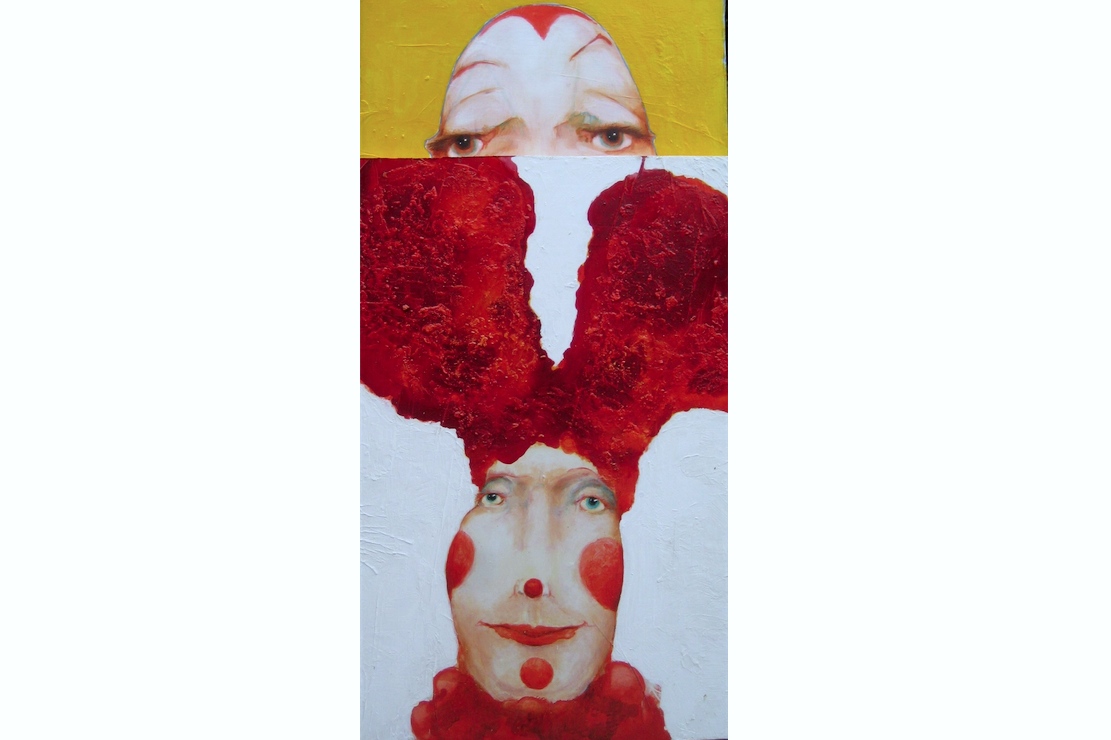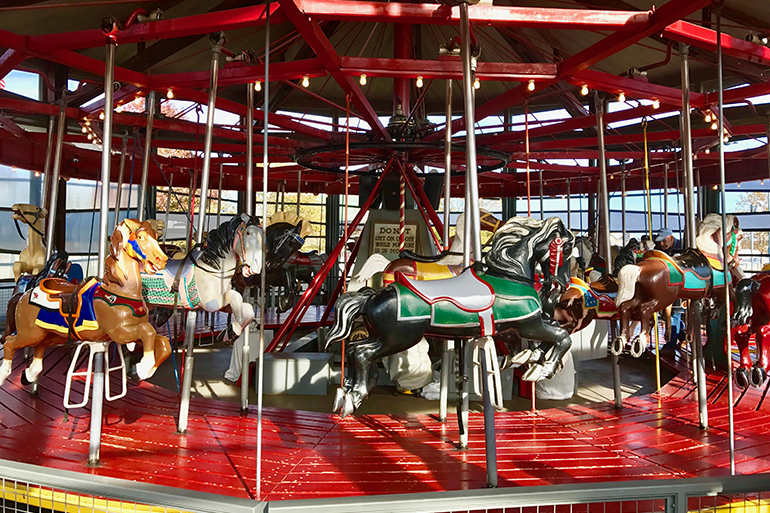David Geiser: Not Clowning Around

Whenever David Geiser finishes a clown portrait, those who follow his work are likely to be amazed at the surreal spin he keeps putting on these grotesque figures, and also awed by how he continues to evolve as an artist while maintaining a recognizable style.
An abstract expressionist who began his career in the San Francisco underground comics scene decades ago, Geiser has embraced different media and techniques over the years, without foregoing his signature styles and themes. His Clown Oracles (he’s “obsessed” with them, he admits) are full-lipped, red- or blue-nosed, sometimes grizzled, fancifully deformed figures. Like the toothy, exaggerated creatures that appear on his bizarre but carefully drawn colored pencil “Geiser Ink” cartoons, they exemplify Geiser’s telltale wicked wit, but in no way interfere with the tactile, layered, de Kooning-like abstract oils he continues to produce.
No surprise, then, that this classically trained artist (University of Vermont, École des Beaux-Arts, Art Students League), who has a house and studio in Springs, can occasionally be found in the city, teaching classes at the Art Students League. Not all artists who identify as “abstractionists” know what they’re drawing away from, which is the meaning of the word “abstract,” but no matter how ugly-weird or scrofulous Geiser’s grotesques appear, they evidence technical skill and solid understanding of anatomy. Geiser is an abstract artist who can draw, paint and illustrate. And though he generously acknowledges colleagues who work in acrylic, that medium is not for him. He finds it “arid, dead,” and says it doesn’t give him the pigment he loves in oil.
Arguably, his most impressive works are large, beautifully composed, built-up pigment layers of rich earth-tones or swaths of deep blue and orange—glazed abstracts which feature cenotes (natural pit sinkholes) and mandalas set against rope drips, slash lines and bursts of poured pigment. Sections that seem to glow in one color on close inspection reveal under-painting of another, a warming yellow, for example, which is layered under white. When Dan’s caught up with Geiser, he was touching up a huge work of nine joined wood panels that he describes as referencing Bosch’s fabulous plant series—but even here, amid skeins of paint that flow, ripple and ooze in free-form patterns, Geiser can mischievously divert to his surreal cartoons, or create another clown, perhaps setting him in a neatly painted harlequin context.
What’s with the clowns? His “sensibility,” Geiser says, has always prompted him to toy with “tricksters.” The clown comes from a long line of soothsayers (the fools in Shakespeare’s plays come readily to mind), sardonic court jesters, tribal medicine men and Zen priests, who embody or hint at the essential absurdity of life. Think of those “exquisite existential clowns Vladimir and Estragon in Waiting for Godot,” he suggests, “and God knows, there’s enough absurdity and posturing in the art world. So part of the message of the clowns may be: Don’t take anything too seriously in a world that runs on guns and money.”
In Springs, Geiser gets away from that world. He loves being in an artists’ community and maintains friendships with Eric Fischl, Dan Rizzie, et al., though he does sometimes miss “heavy dialogue” with city-based colleagues and critics. He’d love to do more teaching (“I dig it”), loves his time at the League and says with a straight face that he “steals” from his neophyte students. They’re not (yet) encumbered with art culture ideas, and they welcome the shortcuts and practical advice he provides (priming boards, laminating on paper, using ordinary floor varnish). But Springs gives him peace and solitude, as opposed to the seductive distractions of the city. “I can’t wait to get up in the morning to see how the varnish is dispersed…my head is always in the game.” As is his heart.
For more on the artist, visit geiser.net.



